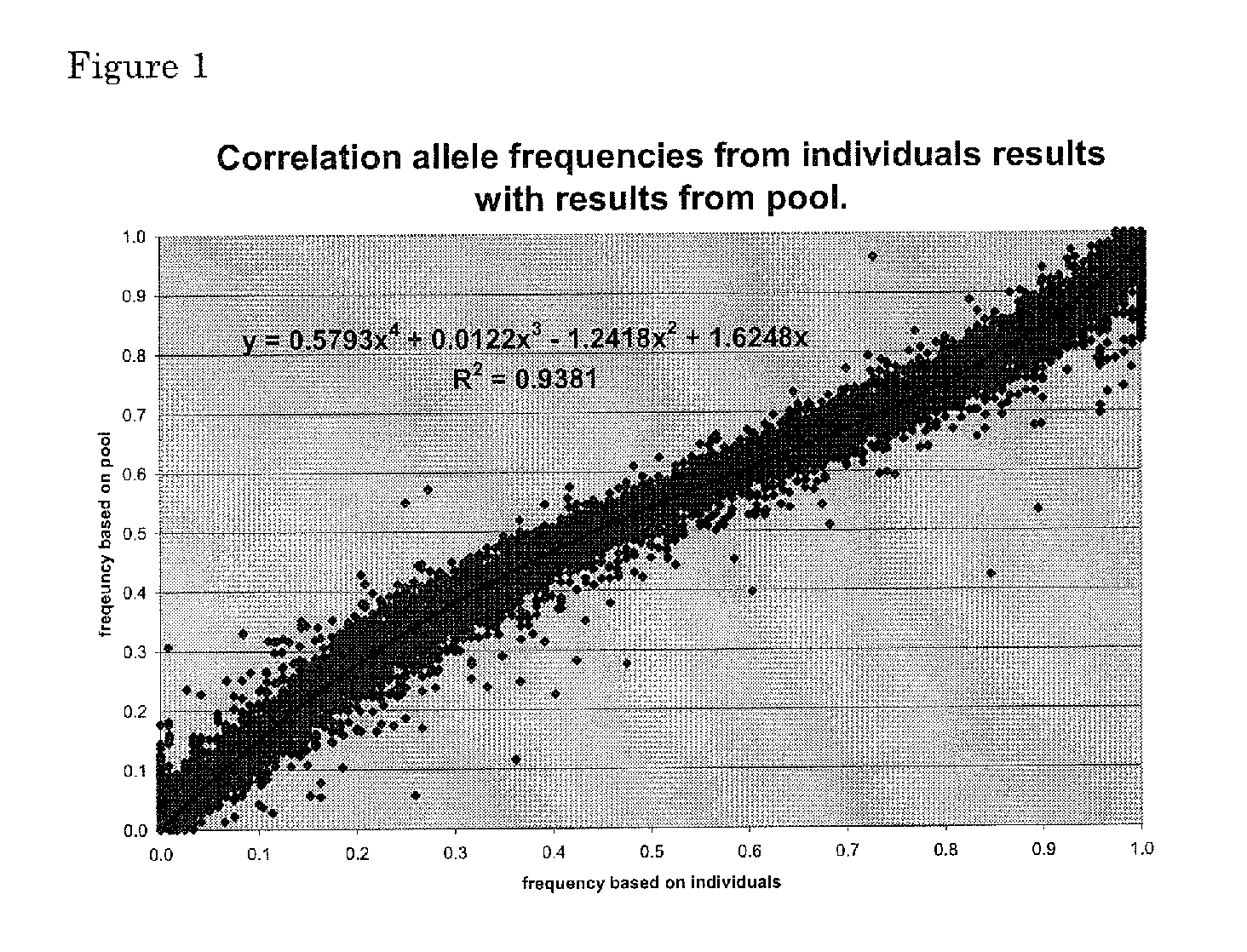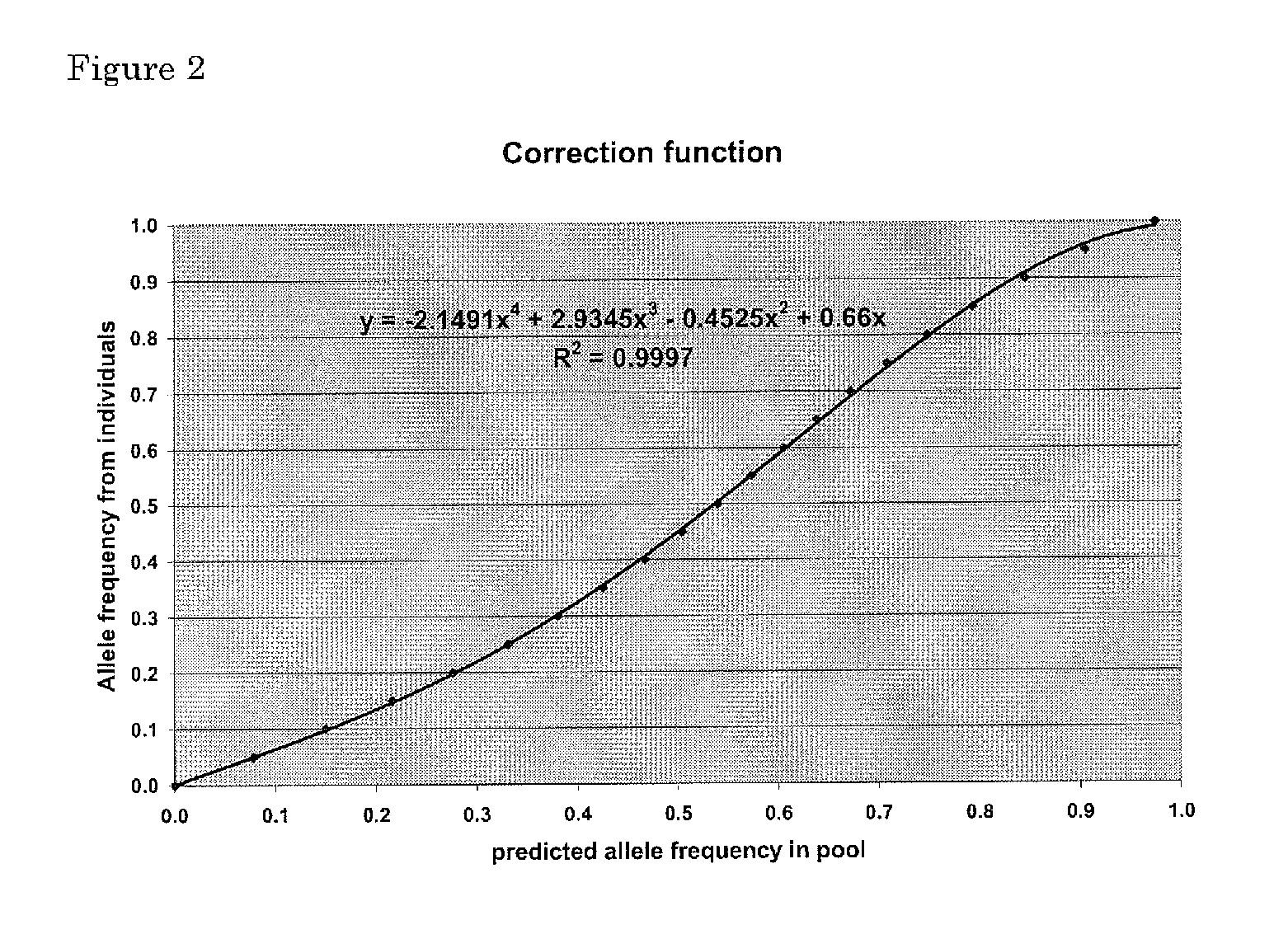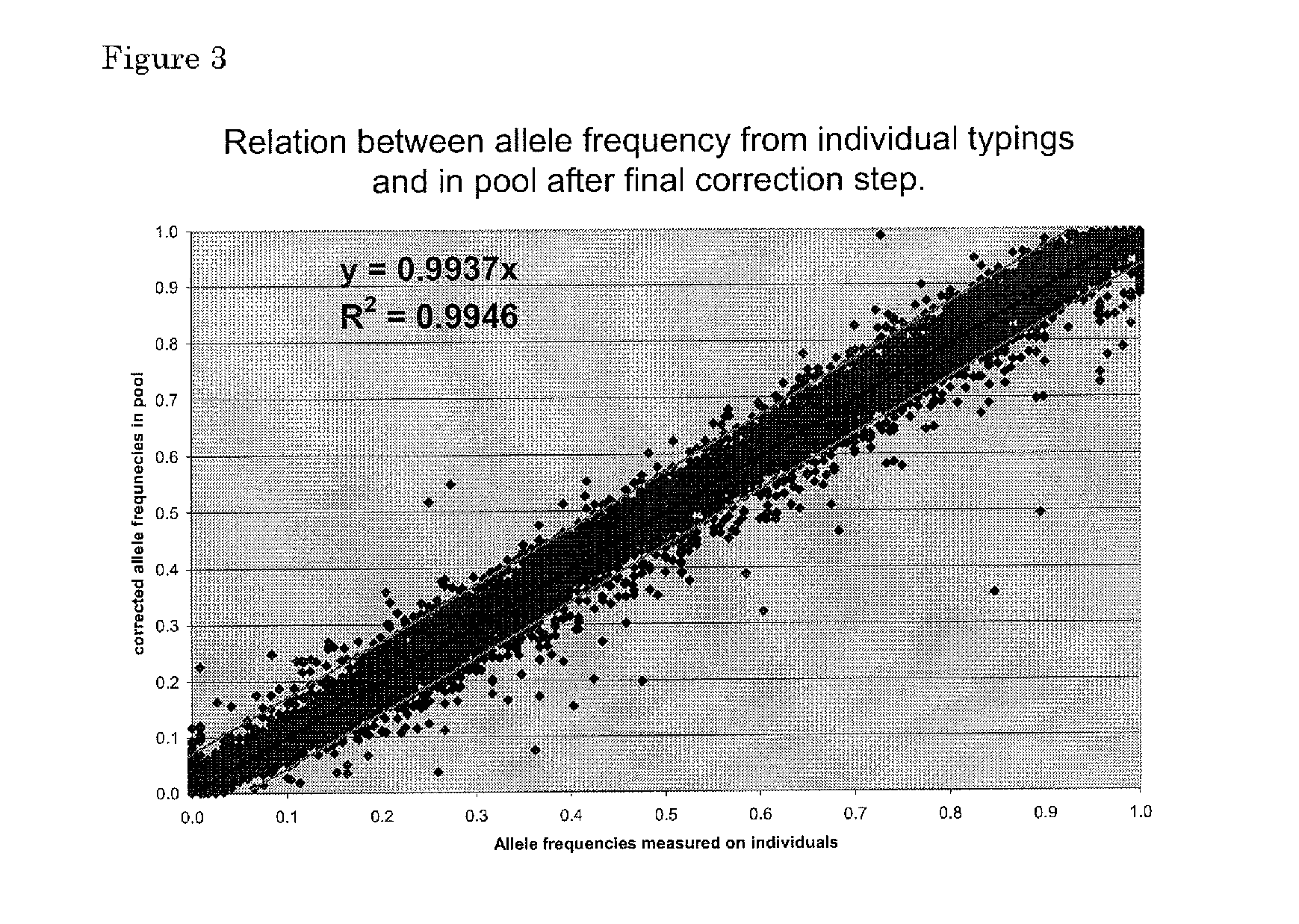Method of pooling samples for performing a biological assay
a biological assay and sample technology, applied in the field of categorical outcome measures, can solve the problems of requiring budgets of up to several millions of dollars, almost all genotyping is partial, and the cost of such programs is still significan
- Summary
- Abstract
- Description
- Claims
- Application Information
AI Technical Summary
Benefits of technology
Problems solved by technology
Method used
Image
Examples
example 1
[0129]Example of Using the Pooling Procedure for Genotyping of Diploid Individual Samples for the Presence of SNPs Using 50 Individual Samples and 1 Pool of 50 Individuals for Finding the Correction Factors.
[0130]Step 1) 50 individuals were Tested Separately.
[0131]For every SNP and every individual we obtained an intensity for red fluorescence (presence of A allele) and green fluorescence (absence of A allele =presence of B allele) using two different fluorochromes in a microarray format. The ratio between red and green intensities is not always 1 (or 0) for a homozygous animal or 0.5 for a heterozygous animal.
[0132]The data on individual genotypings were used to calculate the correction factors from the signal intensities for all typed SNPs.
[0133]To obtain the most important correction factor (K), a correction factor often used to correct the data for any unequal efficiencies in representing the alleles, we used signals from heterozygous genotypes. If heterozygous genotypes were no...
example 2
[0160]Example of Using the Pooling Procedure for Genotyping of Diploid Individual Samples Using 50 Individual Samples and 25 Pools of 2 of these Individuals for for Finding the Correction Factors.
[0161]Step 1) 50 individuals are tested separately as in step 1, example1.
[0162]Step 2) Construct 25 pools of 2 samples each in the optimal ratio 1:3 including all 50 individuals from step 1 above. In these pools estimate allele frequencies either uncorrected or based on the correction factors found in the first step.
[0163]Step 3) Compare the sum of the allele frequencies from the 2 individual typings and the estimated frequency in the pools of 2 individual samples. From these 25 points calculate a regression line. The regression coefficient and intercept can then be used to correct the estimated frequencies from other pools.
[0164]Step 4) Then construct DNA pools of 2, 3 or n individuals in the ratio 1:3, 1:3:9 or 1:31:32:3(n−1).
[0165]Step 5) With the correction factors found in step 1 and ...
example 3
[0167]Example of Genotyping of Haploid Individual Samples.
[0168]When two haploid samples are pooled and measured for the presence of allele A at a certain position in the genome, the expected ratios in the measurements (peak height, surface under peak, intensities) are as in table 4;
TABLE 4Result points of allele frequencies in pooled samples with 2 haploidindividuals and inferred genotypes of the two individuals in the pool for a SNP with A and C alleleInferredInferredgenotype ofgenotype ofindividual 2Result point ofindividual 1(present infrequency of allele A(present in poolpool in 2in pooled samplein 1 part)parts)0.00CC0.33AC0.67CA1.00AA
[0169]If only pools of two samples are used correction factors may not be needed. When more samples are pooled correction factors probably are needed. They then can be calculated from pools of 2 samples with equal amounts of the analyte to simulate heterozygous and homozygous diploid individuals.
[0170]When pooling 3 samples are pooled in a ratio o...
PUM
| Property | Measurement | Unit |
|---|---|---|
| molar ratio | aaaaa | aaaaa |
| molar ratio | aaaaa | aaaaa |
| frequencies | aaaaa | aaaaa |
Abstract
Description
Claims
Application Information
 Login to View More
Login to View More - R&D
- Intellectual Property
- Life Sciences
- Materials
- Tech Scout
- Unparalleled Data Quality
- Higher Quality Content
- 60% Fewer Hallucinations
Browse by: Latest US Patents, China's latest patents, Technical Efficacy Thesaurus, Application Domain, Technology Topic, Popular Technical Reports.
© 2025 PatSnap. All rights reserved.Legal|Privacy policy|Modern Slavery Act Transparency Statement|Sitemap|About US| Contact US: help@patsnap.com



